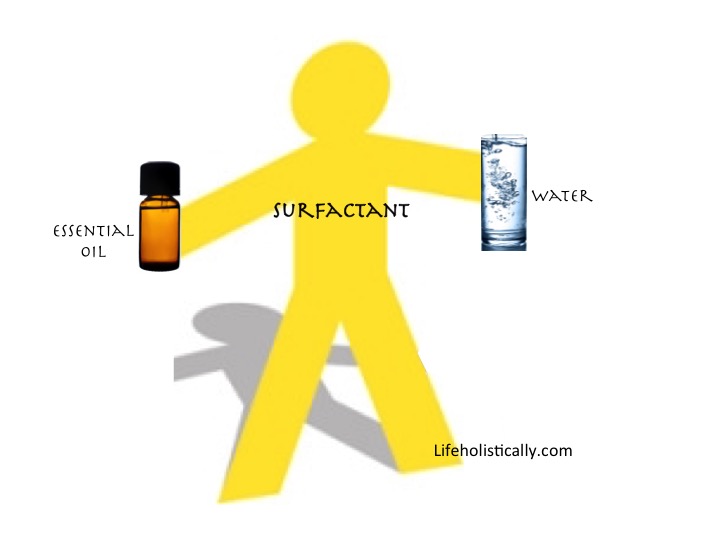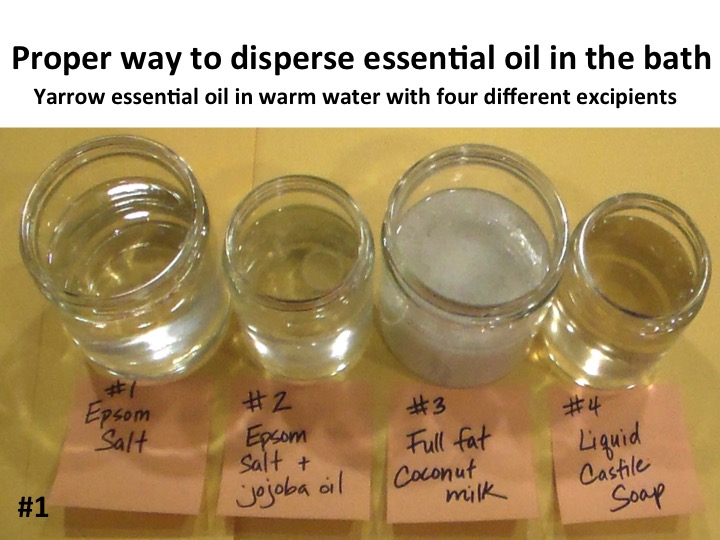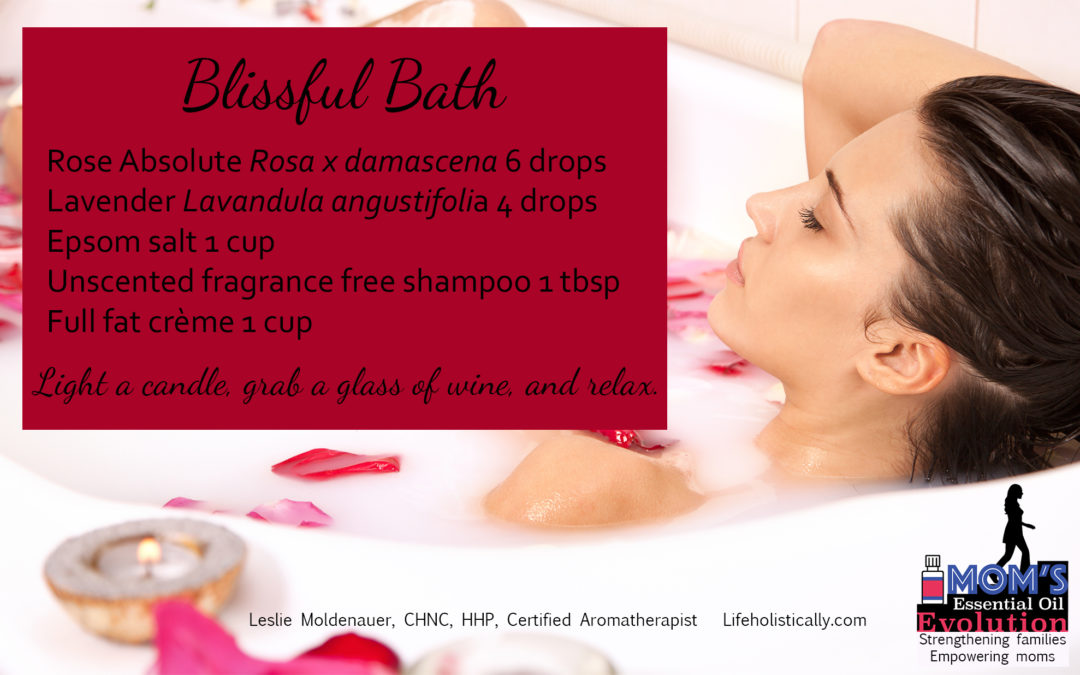
Proper Use of Essential Oils in the Bath
Proper use of essential oils in the bath. Not only are the specific oils used in the bath of great importance, safety needs to be considered in how you add them as well. For example, use peppermint with great caution as it can be a very “eye-opening” experience, and bergamot is a very strong photosensitizing oil, the bath is simply not the “best” place for its use.
There are many bloggers that recommend adding essential oils to (only) Epsom salts for a calming bath experience. This is not recommended. In order to cover why that is, let’s talk just a moment about chemistry.
Essential oils are not soluble in water. Essential oils are lipophilic (fat-loving), also called non-polar substances (but they are not actually fats). In contrast, Epsom salts or sea salt hydrophilic (water-loving), also called a polar substance. As a general rule, polar substances will dissolve in polar solvents and non-polar substances will dissolve in non-polar solvents. This confirms the fact that water and oil do not mix.
One option is adding your essential oil to carrier oil before stepping in. This is an option, and it does avoid neat application on the skin (never recommended). So if you are in a pinch you can use a carrier oil.
Alas, there is a better way!
A surfactant is used to properly disperse essential oils in the bath. A surfactant is something that will cause two substances that do not easily mix together (oil and water), to chemically bond and remain mixed. A surfactant’s job is “connecting” the two together.
Soap, for example, has a chemical structure that is attracted to water on one end and attracted to oil on the other. Castile soap, shampoo, or bubble bath is very effective. Another option is a product called Solubol, it can work beautifully to mix oil and water, but I prefer to use fragrance-free shampoo.
I performed an experiment recently to show how essential oils dissolve in water and varying substances. Let’s take a look!
I used yarrow essential oil for its blue color. I used very warm water in all 4 containers. I thoroughly mixed the containers, multiple times, and let them settle.
My mixes are as indicated in image #1 are:
#1-Epsom salts (2 tbsp) 4 drops eo
#2-Epsom salts (2 tbsp) and jojoba oil (1 tbsp) 4 drops eo
#3-Full fat coconut milk (2 tbsp) 4 drops eo
#4-Liquid castile soap (2 tbsp) 4 drops eo
The results?
#1 was the worst of the 4. All of the oil sat on the very top of the water.
#2 the essential oil and carrier oil mixed together well, to then sit on the top of the water. (Better than #1 or neat use, but still not the best).
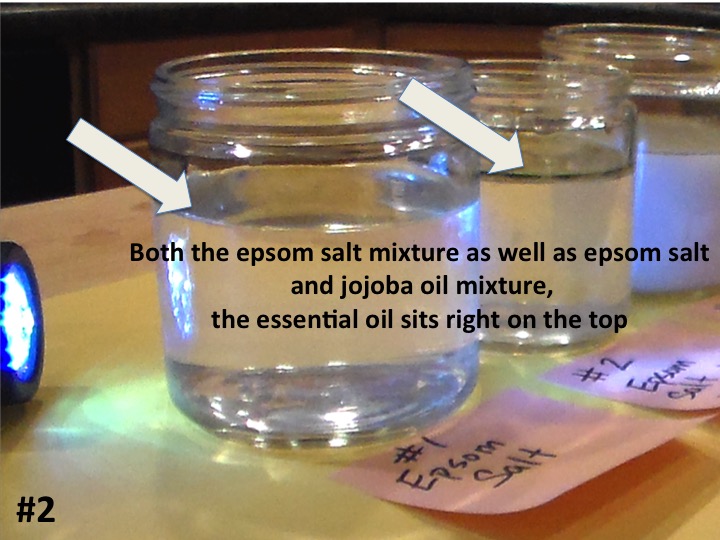
#3 was average at best. The image is not perfect because you can not see through the glass, but there are small droplets throughout the container, with many large droplets still sitting on the top. (Check the top of this container in image #1, you can see the droplets.
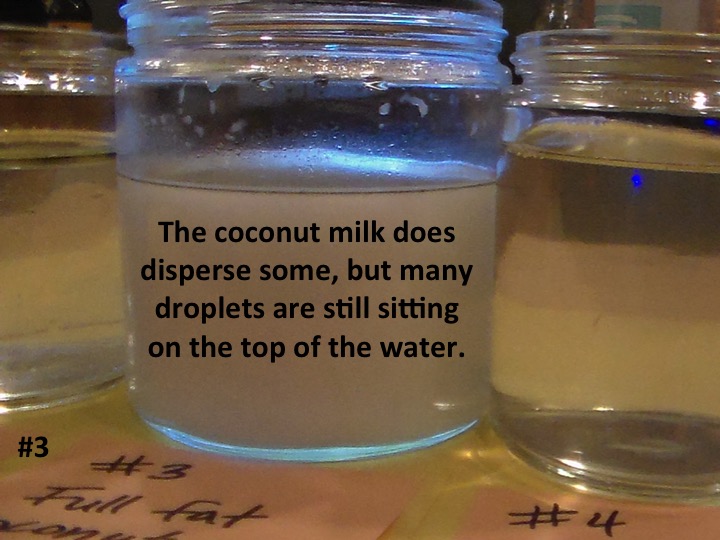
#4 and winner, liquid castile soap. It mixed rather well, no droplets on top, or within the container.
Of the 4 excipients, liquid castile soap is your best bet to fully disburse your essential oils in the bath. Some say liquid castile soap is drying….I have a solution!
I am a fan of Epsom salts for their muscle relaxing properties (magnesium), and carrier oil for softening the skin, so here is a blend I typically use for myself:
In a container I mix well:
1 cup Epsom salts
1 tbsp skin nourishing carrier oil
1 tbsp Dr. Bronner’s liquid castile soap or fragrance-free shampoo (You will likely find the shampoo to be the better choice)
3-6 drops essential oil (Depending on whether you are bathing yourself or a child)
***12/1/2016 UPDATES***READ ME IN FULL
I wanted to share an important update. I have had some state that they get an unpleasant clumping effect when using castile soap. It was never clear, however, the brand that they used. Yesterday, I decided to treat myself to an aromatic bath, and used a product I had never tried before, “Aloe vera Castile shower gel”. The result? Awful clumping! Lesson learned. Make note that I have never had this result with Dr. Bronner’s brand Castile soap…..but cannot guarantee another brand will not clump. Shampoo, however, has never failed me!
This will not be a recipe that you can make ahead of time for gifting. If you want to make it, keep the dry and wet ingredients separate and sent instructions with the gift. A little more legwork, but necessary to avoid clumping and molding.
****A great option for the bath, and especially bath bombs is Natrasorb. Read about it here.
Here are a few new images from my most recent experiment (12/13/2016). I had someone suggest fractionated coconut oil dispersed well, so I added it to the mix. See images below.
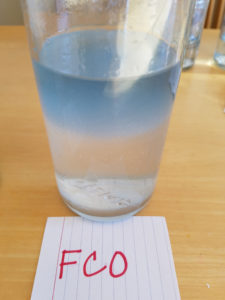
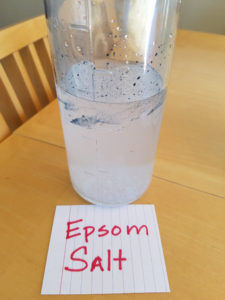

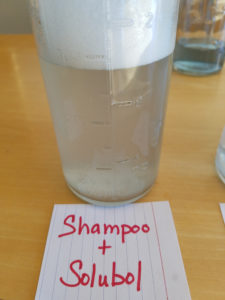
As you can see, FCO and German chamomile in warm water do not disperse. Neither does Epsom salt or any other carrier oil. The last image of shampoo/solubol is ideal. It is important to note that carrier oil is “OK” as far as it eliminates “neat” oil in the bath, and can be used in a pinch. It does not however properly disperse, so everything will sit on top of the water, no water how much you mix it. Epsom salt alone is essentially neat oil, no matter what you read on the Internet. Happy soaking!

Like so many practices in life I encourage you to become educated on the proper use of essential oils. When using them, please do so cautiously, understanding that there is often misinformation on the internet. You can be assured that I support only educated and proven resources. While essential oils should not be feared they should be respected and used properly to ensure the safety of the individuals using them.
Please note that I am not a medical practitioner. The content of this website is provided for general informational purposes only and is not intended as, nor should it be considered a substitute for, professional medical advice. Do not use the information on this website for diagnosing or treating any medical or health condition. If you have or suspect you have a medical problem, promptly contact your professional healthcare provider. By using this website, you assume full responsibility and liability for your own actions.

